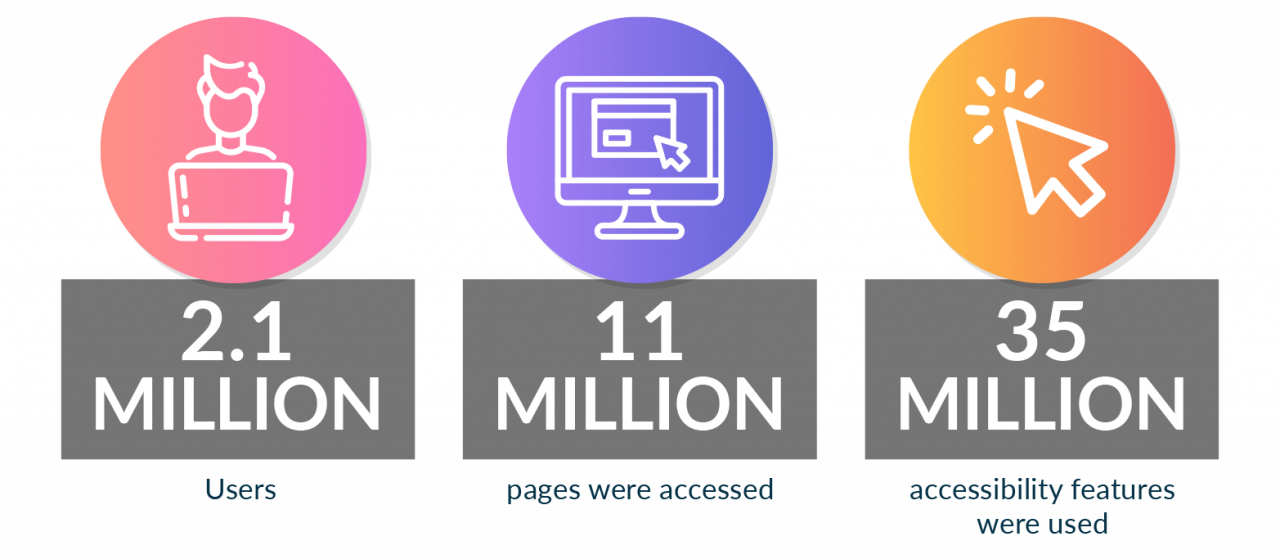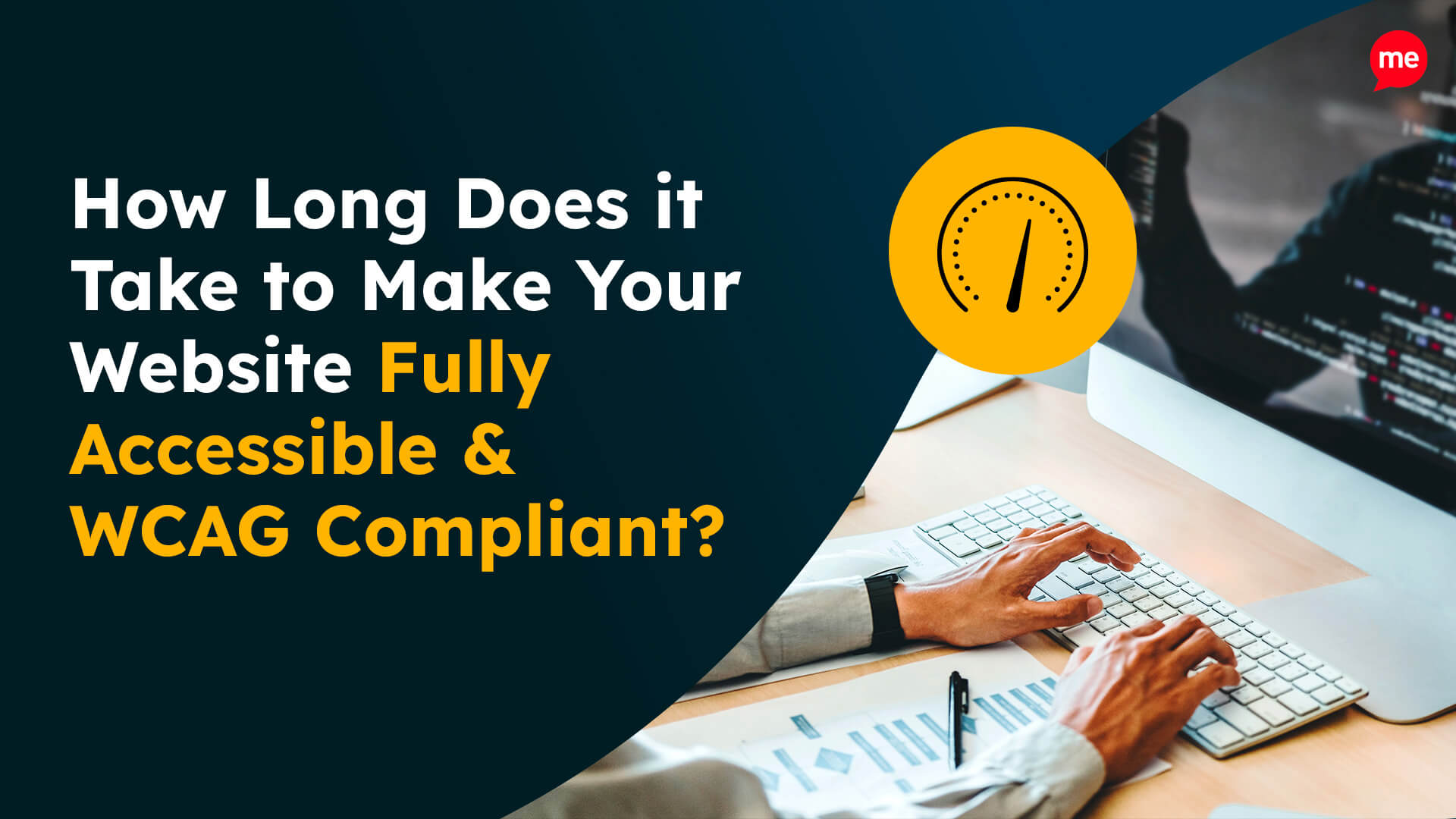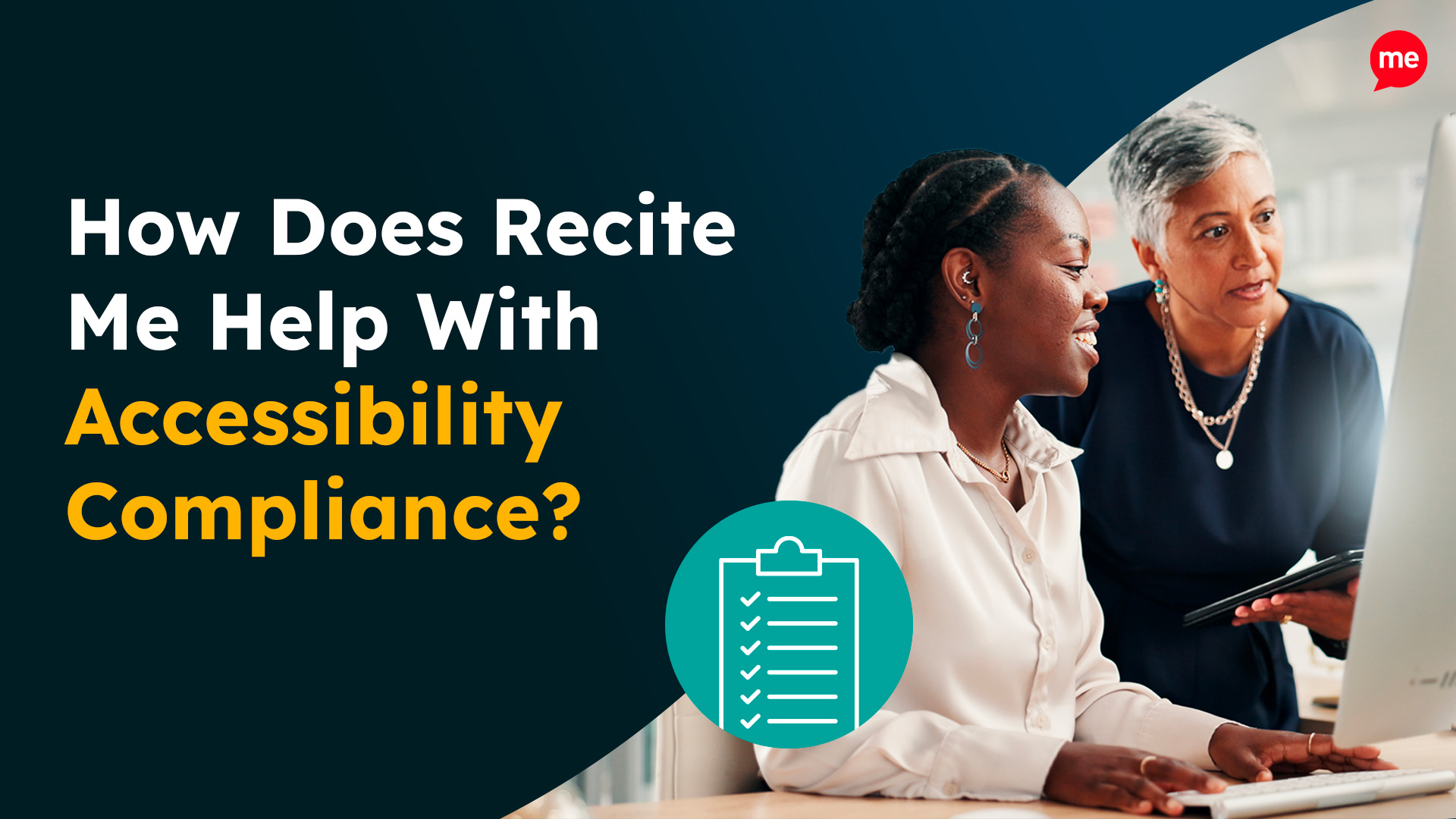Global accessibility guidelines exist to ensure those who face access barriers are not excluded from online life. The Web Content Accessibility Guidelines (WCAG) are the gold standard when it comes to web accessibility. But because technology is constantly evolving, so too are the guidelines.
The new WCAG 3.0 guidelines have been in the drafting process since January, with an estimated publishing date of 2022. The new guidelines are set to make websites, apps, PDFs, ePub, and other emerging technologies even more accessible for people with disabilities.
As an industry leader in accessibility, Recite Me is always ahead of the curve when it comes to accessibility standards. However, we appreciate that some of the terms, language, and jargon can sometimes be hard to follow.
Here’s a run-down of what you need to know…
What Is Website Accessibility?
When websites, apps, and other digital products are designed, coded, and presented correctly, everyone can use them. However, when content fails to meet recognised accessibility standards, people with disabilities cannot read, understand, or use online information.
Having an accessible and inclusive website benefits businesses, individuals, and society as a whole. However, the most recent research data from WebAIM shows that 97.4% of website homepages fail to comply with current guidelines.
Who Needs Web Accessibility Assistance?
One in every five people has some form of physical or hidden disability that makes accessing online content difficult.
An access barrier can be any element of the design or formatting that prevents users from reading and understanding the content. The people most susceptible to access barriers are those who struggle with:
- Vision impairments, including colour blindness and deafblindness
Learning difficulties like Dyslexia, Dyspraxia, and Hyperlexia
Attention disorders like ADHD
Mental or neurological conditions like epilepsy, dementia, and Parkinson’s disease
Autism
Language/linguistic problems
Physical disabilities
W3C and WCAG Explained
We know the abbreviations, technical terms, and all of the different versions can be challenging to wrap your head around, so here’s a breakdown of all the key information.
What are WCAG and W3C?
WCAG is a set of measurable standards, specifically designed to make websites more accessible to people with disabilities. WCAG documents and updates are published by the Worldwide Web Consortium (W3C). The W3C was founded in 1994 to develop common sets of standards for the benefit of all internet users. It comprises several member organisations and is led by Tim Berners-Lee, the computer scientist credited with the invention of the world wide web.
Compliance Levels
The WCAG provide minimum standards that businesses globally should adhere to. They incorporate principles for labels, headings, colour contrast, text size and navigation, among other factors. There are three levels of WCAG conformance:
A – The most basic level of accessibility, comprising criteria that should be easy to achieve without much impact on website design or structure.
AA – This is the level that most development teams aim to meet, and includes additional criteria to level A. WCAG AA compliance is now legally required for certain sites, and this is the level typically referred to when discussing ‘making a website accessible’.
AAA – With even more benchmarks set above level AA, this is the most comprehensive standard of accessibility compliance. For a website to achieve this rating, it would need to comply with every listed success criterion.
WCAG Version History
At the turn of the century when the first WCAG were only recently released, less than 5% of the global population were active internet users, compared to 59.5% in 2021. As internet access increased and web technologies continued to evolve, updates and revisions were needed to ensure ongoing accessibility and inclusion factors were met.
WCAG 1.0 – Published in May 1999, the original WCAG represented the first step in establishing guidelines for web accessibility, and was primarily focused on HTML.
You can read the full WCAG 1.0 guidelines on the W3C website.
WCAG 2.0 – Released in December 2008, this updated version of WCAG moved past basic HTML to encompass additional technologies. It also embedded the four cornerstone principles that still form the basis of today’s WCAG standards:
Perceivable – Accommodating various sensory differences.
Operable – Interface and navigation components must be usable by all.
Understandable – Website information and operation must be consistent and understandable.
Robust – Able to function using all applicable technologies.
Read the WCAG 2.0 guidelines in full on the W3C website.
WCAG 2.1 – More of a revamp than an entire overhaul, these updated standards came into effect in June 2018. The main additions addressed accessibility on mobile browsers, as smartphone and tablet use had become more universally prevalent. For example, ensuring options for content orientation so that users are not locked into portrait or landscape views if they cannot rotate their device.
The full WCAG 2.1 guidelines are available on the W3C website.
Why is WCAG the International Standard?
By providing specific, technical, and measurable frameworks supported by in-depth documentation for implementation and remediation, WCAG delivers all of the methodology and techniques website owners need to ensure compliance.
The guidelines are developed to be used by anyone involved in building and maintaining a website. This includes web developers, content writers, graphic designers, tool developers, accessibility testers, and anyone else who seeks to learn or better understand how to implement accessible online journeys.

What are the Changes Between WCAG2 and WCAG3?
WCAG 2.1 and 2.2 successfully served to bridge gaps in criteria from WCAG 2.0 as internet technology developed. However, WCAG 3.0 represents an entirely new model that includes improved approaches to testing and allows for more frequent updates so that it can accommodate a wider set of changing user needs and technologies.
In addition to stipulations for the build of your website, some of the main changes in WCAG 3.0 relate to:
Text alternatives
Clear wording
Captions
Structured content
Visual contrasts

You can read the complete working draft of the new WCAG 3.0 guidelines here.
How to prepare for WCAG3
While there will still be some overlap with previous WCAG 2.X versions, WCAG 3.0 includes additional tests and different scoring mechanisms. So for now, WCAG 3.0 is not backwards compatible with, nor does it supersede WCAG 2.X versions. However, once they become an official W3C recommendation, web developers and content creators will need to use WCAG 3.0 to maximise their web accessibility compliance efforts.
In the meantime, we recommend you take the following steps to ensure you are up to date with current WCAG standards and are ready for when the 3.0 version becomes the new norm:
Familiarise yourself with current WCAG standards (version 2.2) and make any required adjustments.
Ensure your website meets the national and international legal requirements for your region:
– The Equality Act (UK)
– The European Accessibility Act (Europe)
– The Disability Discrimination Act (AUS)
– The Americans with Disabilities Act (USA)Check that your web design conforms to best practices and principles for accessibility.
Look into assistive technology software to add further layers of usability to your website to make it truly inclusive.
How Can Recite Me Help?
At Recite me, we are doing everything we can to work towards conformance with the new WCAG 3.0 model and are here to help your organisation understand and adapt to new standards of web accessibility as and when they are implemented. As such, we have developed a range of web accessibility tools that support people online and allow us to advise website owners on issues and solutions.
The Recite Me Assistive Toolbar
Some of the most common barriers faced by internet users include:
Not being able to read the text due to font, text size, or text spacing.
Not being able to read the text due to poor colour contrasts between background and foreground.
Not being able to use a mouse or touchpad.
Not being able to focus on the relevant section of text.
Being distracted by graphics and image carousels.
With the Recite Me web accessibility toolbar, accessibility features can be used individually or combined to make multiple adjustments for ultimate ease of use. Plus, once users have set their preferences for customisations, those settings persist for their entire journey on that digital platform and they are automatically applied the next time they return. Users can:
Personalise font size, type, and colour options to make each web page easier to read.
Utilise the mask screen tool, which isolates parts of the page to help with focus.
Use the ruler tool to make reading easier.
Download content as an audio file as an alternative to reading.
Convert page content into over 100 different on-screen languages.
Have the page read aloud in a choice of 35 different languages.
Customise PDF documents and have them read aloud or translated.

The Recite Me Accessibility Checker
Alongside usability factors, the way a website is built is an essential consideration in accommodating varied accessibility needs. WCAG 3.0 outlines standards that website builders and owners need to follow. To identify non-compliance issues and fixes, Recite Me is currently beta testing an accessibility checker that can:
Identify any areas of non-compliance with WCAG criteria.
Show you what to fix and how to make the most effective improvements.
Track your improvements over time and manage your fix queue.
Help you share your accessibility report to showcase your continuing commitment to digital inclusion.
So far, the feedback has been fantastic, and we are looking forward to helping more businesses as they strive to provide even more inclusive online journeys.
“It is a pleasure to work with a specialist provider like Recite Me who takes great care to understand customer needs. We are proud to be a digitally inclusive company that values each and every online visitor.”
Subhash Mishra, Head of Digital Strategy, FirstRail
Recite Me Data
Our software is already installed on over 3500 websites, and every day we help thousands of internet users to enjoy accessible and inclusive online journeys.
Across a whole range of sectors including employment, education, public sector, retail, sport, leisure, travel, utility services, charities, and not-for-profit organisations, our most recent stats over 12 months show that:
We supported over 2.1 million users
Over 11 million pages were accessed with the Recite Me toolbar enabled
Our accessibility features were used over 35 million times to create unique user experiences

Need help navigating your way around WCAG compliance or have questions about the new set of standards? Please feel free to contact our team for more advice, book a live demo of our toolbar, or read more about our accessibility WCAG checker.
Article Sources: WebAIM, Statista.


